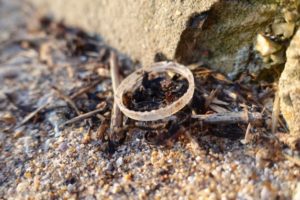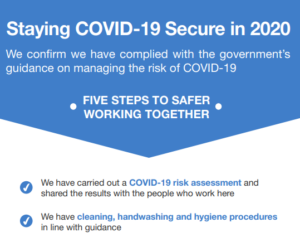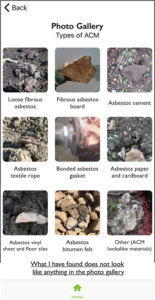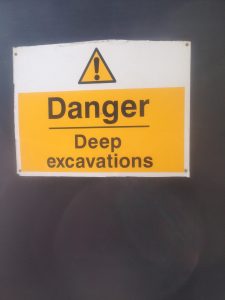
Geo-Environmental Matters (GEMs)
Keep your edge….
……..it is your professional reputation
Just check out the “recently published” to see what is new in GEMs – if you like what you see why not register for your updates here.
Not sure what you are looking for – why not use our search facility (top right) with common key words
GEMS – A website for the construction industry on ground related issues and a must for the ‘busy’ or aspiring professional Geotechnical Engineer and Contaminated Land Specialist
Latest Posts
November 27, 2023A recognition of competence under the LCRM Guides
Becoming a SiLC is the natural progression, once chartered, that recognises your commitment to quality and raising standards, expertise and professionalism within the industry.
The Specialist in Land Condition (SiLC) Register Limited works to maintain and improve the quality of the work done by professionals within the brownfield investigation and regeneration industry. You would be joining a community that is well respected in their commitment to not only their careers but also the environment, health and future of generations to come in the redevelopment of derelict and brownfield sites.
Planning policies and decisions should ensure that: …..adequate site investigation information, prepared by a competent person, is available to inform these assessments.
National Planning Policy Framework (2023) Clause 183 (c)
A SiLC is not expected to be an expert in all fields but is recognised as having a high degree of experience and competency in land assessment. The registration provides a high standard of credentials to regulators, potential employers and clients that gives them confidence in your skills and abilities.
How can you get registered?
You can directly apply by completing an application form, after which if successful you will be required to undertake a SiLC exam, an individual written submission and peer interview. However, it is recommended to all those considering applying that you attend an ‘Introduction Day‘ to gain more understanding on both the scheme and the assessment process.
Those attending an Introduction Day not only save money on the Application Fees but are more likely to be successful in achieving SiLC status
Claire Dickinson ( SiLC PTP Member)
Not quite ready, then why not join the Affiliate Scheme?
For those who are perhaps not ready to apply to become a Registered SiLC there is an Affiliate Scheme to guide and mentor you through your journey to becoming one.
If you would like to hear more about the affiliate scheme and what registered SiLC’s think about their careers in land contamination do watch this video:
Related posts:
Find out about Geo Careers
Are you a risk assessor? And do you ever want more knowledge on chemical hazards?
Asbestos, the “unexpected” risk when coring through ground floor slabs
Are you a home owner? [...]
Read more...
March 29, 2023Want something different to do next time you visit a beach? Why not help us understand how plastics might be affecting our environment?
A nurdle is a plastic pellet, used by a manufacturer to create new products and is typically 2 -5mm in size of varying colours, either clear or opaque. You can find out all you need to know how to hunt for them at ‘The Great Nurdle Hunt’ website ‘how to take part’ page. In 2022 the hunt identified in excess of 1m nurdles, from 317 hunts in 23 countries. Get hunting now! You can take part anytime and anywhere.
Related posts:
Staycation
Microplastics and nanoplastics – a contaminant or not? [...]
Read more...
February 27, 2023A question that the European Commission was trying to answer in the release of their ‘Future Brief: nanoplastics: state of knowledge and environmental and human health impacts -Issue 27‘ . Whilst there has been some debate about the definitions of these different groups of plastics classified by size, typically microplastics are taken as less than 5mm and nanoplastics by less than 1μm. However, what is agreed is that the smaller the particular the more of a hazard it is likely to pose. At 1μm, nanoparticle sized plastics may cross into cells.
Copywrite Geo-Environmental Matters Ltd
Copywrite Geo-Environmental Matters Ltd
Microplastics and nanoplastics have been found in a wide range of media including:
Human blood (https://pubmed.ncbi.nlm.nih.gov/35367073/)
On our beaches eg ‘over 60,980 nurdles collected from a single 100m stretch of beach for an undergraduate degree project’
in the air we breathe ( ‘Researchers in London found ‘Microplastics were found in all samples, with deposition rates ranging from 575 to 1008 microplastics/m2/d’)
to be able to enter the food chain (https://pubmed.ncbi.nlm.nih.gov/36150226/)
in our soils ( ‘Researchers from Cardiff University and University of Manchester found that ‘500 -100 microplastic particles per square meter of agricultural land were applied per year‘)
in Rivers e.g University of Bangor found more than 1000 pieces of plastic per litre of water in the River Thame‘
Taken from The Great Nurdle Hunt Map at https://www.nurdlehunt.org.uk/nurdle-finds.html
By comparison in the UK drinking water treatments appear to successfully remove microplastics with research suggesting that 99.9% of microplastics are removed from drinking water during the treatment of raw water sources. Indicating that our exposure through this route might be limited. Nevertheless, the exposure through other routes due to the widespread prevalence and persistence in the environment is a pressing consideration. So what are the real risks posed to human health and the environment that may arise from:
the type of plastic polymer (some types are more hazardous than others);
additives to plastics which are hazardous and changes that might cause these to leach; and
chemicals that may attach to plastic particles e.g Polychlorinated Bipheyls (PCBs) that are already known to be hazardous to human health and the environment.
There is much on-going research in what is a complex area of study of invisible particles that are difficult to detect yet alone investigate any detrimental effect. However, concern has driven governments to start reducing plastics at source, something we can all contribute to. In addition, many governments are looking into undertaking research to understand the risks posed through dermal, inhalation and oral exposure. So where is the UK currently in terms of evaluation of the microplastic risk to health? In 2021 the UK Committee on Toxicity (CoT) concluded that ‘it is not yet possible to perform a complete assessment for the potential risks from exposure to micro and nanoplastics via the oral and inhalation routes‘ and that further research would be required. CoT ‘highlighted that additional information will be needed from all exposure sources, which include indoor and outdoor air, dust and soil, before a risk assessment can be completed.’ To read the full CoT click here.
Related posts:
Find out about Geo Careers
New_ CONCAWE report on Environmental fate and effects of poly- and perfluoroalkyl substances (PFAS)
New _ UK Climate Change Risk Assessment 2017: Evidence Report
AquaConSoil 2017 – call for abstracts [...]
Read more...
February 20, 2023Wondering whether you would like a geoscience/ geo-engineering career or perhaps you are thinking about a change in career. Find out more here with links to interviews and talks about different opportunities to work in geoscience. There are many options available. Just check out the Geological Society (Geol Soc) Poster below for the areas of work now and in the future where geoscience can and does play a pivotal role in society.
The GeolSoc ‘Geoscience for the Future Poster’ available to download here
For a broad overview of careers in geology go to: https://www.geolsoc.org.uk/Geology-Career-Pathways/Careers
To hear about those already enjoying a career in contaminated land check out the following videos
Consultant Career Path: Assess the suitability of a site for redevelopment and guide companies through environmental liabilities.
Contractor Career Path: Investigate and clean up contaminated sites.
Lecturer Career Path: Carry out research and prepare students to think critically while teaching them about environmental processes
Regulator Career Path: Specialise in environmental management overseeing how construction may affect it.
Thinking of a geotechnical career why not check out this Federation of Piling Specialists video
Related posts:
Waste Enforcement and Prosecutions Continue across England and Wales
The cost of operating illegal waste sites in England is expected to rise from 1st of April 2018
Update to EA’s Groundwater Protection: Principles and practice (GP3)
British Drilling Association Urges Main Contractors to Ensure Subcontractor Drilling Compliance [...]
Read more...
March 7, 2021
WHO has identified lead as 1 of 10 chemicals of major public health concern, needing action by Member States to protect the health of workers, children and women of reproductive age.
Centers for Diesease Control and Prevention regarding Lead (Pb) states “No safe blood lead level in children has been identified”
Public Health for England (formerly the Health Protection Agency) in their Lead Toxological Overview say
The Agency for Toxic Substances & Disease Registry (ATSDR, 2015) lists Pb as second on their hazardous substances priority listing which is based on frequency of occurrence, toxicity, and potential for human exposure to the substance.
Similarly in the UK a review of sites determined under Part2A contained in a report on the state of contaminated land indicated that Lead was second most common contaminant on which sites had been determined.
Distribution of lead in near surface arises both from diffuse anthropogenic pollution sources and from soils derived from rocks affected by mineralisation. For Natural Background Concentrations (NBC) of lead for England and Wales in areas of mineralisation and for urban environments see http://randd.defra.gov.uk/Document.aspx?Document=10333_TGS_Pb_FINAL.PDF
It is noted that the oral bioaccessibility may vary between different lead sources. Based on the paper produce by Palmer, S. et al, (2015). ‘The Effects of Lead Sources on Oral Bioaccessibility In Soil And Implications for Contaminated Land Risk Management‘ this fact may have a bearing on health risks in areas with high NBC where such forms of contamination would not be considered statutory Contaminated Land unless according to the guidance there was a good reason to deem otherwise.
Interestingly, whilst concerns over the use of bioaccessibility criteria in deriving generic screening values was set out in the Development of Category 4 Screening level Main Report it was taken account in the derivation of the lead C4SL (see Appendix H to the main report)
Lead emissions in the UK have dropped considerably since the phasing out of leaded petrol with emissions according to a 2006 DEFRA report dropping from 7465.9 tonnes per annum in 1970 to 162 tonnes per annum in 2002.
Lead was used in water supply pipework prior to 1970 and properties older than 1970 may still contain lead for more advice go to http://dwi.defra.gov.uk/consumers/advice-leaflets/lead.pdf.
Lead in drinking water remains a concern as the current Drinking Water Standard (DWS)of 10ug/l is considered high with a proposed reduction in the European drinking water standards to 5ug/l. Furthermore, the DWI has found that where meters are fitted to supplies with lead plumbing there is an increase in lead concentration significantly higher than the current DWS, although this may be mitigated by flushing.. ( see Assessing the effect of water meter installation on exposure to lead in water – Drinking Water Inspectorate (dwi.gov.uk) ) from recent research by the DWI it would appear that those at greatest risk of from lead DWS exceedances on public supplies are those with lead pipework where there is no phosphate dosing. Consequently, removal of lead pipework up to the compliance point (normally the consumer’s kitchen tap) would need to be a key part of any strategy to achieve the talked about 5ug/l reduction being considered, something which the most recent research suggest may not be a cost benefit if unilaterally applied across England and Wales (see Long-term Strategies to Reduce Lead Exposure from Drinking Water – Drinking Water Inspectorate (dwi.gov.uk))
Related posts:
What do you know about FAME? Does it live for ever?
New _ UK Climate Change Risk Assessment 2017: Evidence Report
New_ CL:AIRE Petroleum Hydrocarbons in Groundwater Guidance
Update to EA’s Groundwater Protection: Principles and practice (GP3) [...]
Read more...
March 7, 2021It goes without saying that for RPE (Respiratory Protective Equipment) to be effective it must be face fitted to prevent leakage.
You may be surprised to know that in the recent HSE Report RR1052 into the effect of wearer stubble on the protection given by Filtering Facepieces Class 3 (FFP3) and Half Masks that are in common use by the construction industry that for some users the effectiveness was compromised with only 24 hours of stubble growth . Three types of FFP3 masks with different materials forming the faceseal (the part of the facemask designed to be in contact with the face) and two types of half facemask were tested across a batch of 15 volunteers. The results were varied as can be seen from the report which can be downloaded at http://www.hse.gov.uk/research/rrpdf/rr1052.pdf
This research reinforces the existing HSE guidance (including COSHH ACoP para. 160) which states that ” In selecting and providing suitable
RPE, consider the proper training and supervision of employees in its use. This will include wearers being clean-shaven in the area of the face seal when
using tight-fitting RPE.” RR1052 also states “This view is also supported in the European Standard EN 529 (annex D.4.2) where “In this context unshaven means hair which has not been shaved within the previous 8 hour period prior to the work shift”
With face fitting being so critical to the effectiveness of RPE , I was drawn to the simplicity of the example on the Constructing Excellence website whereby temporary mask check stations were installed during siteworks (http://ccsbestpractice.org.uk/entries/face-fit-masks/) – a simple but effective way of overcoming the risk of mask leakage for works .
Furthermore perhaps consideration should be given to carrying, shavers as one of my staff did during a recent decontamination project to ensure the best fit possible and thereby making sure your last means of defence remains intact. Why take the risk?
Related posts:
Safety Alert – Fixed and portable angle grinders pose hot work hazard
Safety Alert_ Findings from RAIB on train hitting excavator bucket
Updated _ HSE’s EH60 Nickel and its inorganic compounds: Health hazards and precautionary measures
British Drilling Association Urges Main Contractors to Ensure Subcontractor Drilling Compliance [...]
Read more...
July 1, 2020In additional to all the normal site risks you now need a COVID-19 Risk assessment…..and a good place to start is the guidance on www.gov.uk for construction and other outdoor work. This Guidance is updated as necessary and the current version can be found here.
Poster to display in workplaces where you have followed the guidance downloaded at https://assets.publishing.service.gov.uk/media/5eb959f5e90e0708370f97f9/staying-covid-19-secure-accessible.pdf
A key part of any risk assessment is thinking about the risk and as stated in the HSE’s short Guide on Working Safely during the Coronavirus Outbreak you must
identify what work activity or situations might cause transmission of the virus;
think about who could be at risk;
decide how likely it is that someone could be exposed;
act to remove the activity or situation, or if this isn’t possible;
control the risk.
There are risks that may occur if you are restarting work due to COVID-19 that are not related to transmission of the virus. For example, workers may have been away from work for sometime and be unfamiliar with tasks and/or have lost fitness. Helpfully, the British Occupational Hygiene Society have developed a Coronavirus Hub which which includes some well thought through Return to Work Guidance which can be downloaded here. For the HSE working safely during the coronavirus (COVID-19) outbreak guidance and other resources please visit https://www.hse.gov.uk/coronavirus/working-safely/index.htm
Related posts:
First HSE Guidance on Asbestos in Soils- Consultation ( now closed, originally published October 2015)
It’s here! Our own industry guide to CAR 2012
Are you wearing the right coloured hat?
NEW – on-line training course for non-licensed work on asbestos in soil [...]
Read more...
July 1, 2020CIRIA, on 1 July added a non-licensed work (NLW) on asbestos in soil course to their on-line training offer.
Asbestos is a known Class I carcinogen, which as a result of extensive use and poor management processes has resulted in contamination of soils, and made ground notably including construction and demolition debris.
Work which disturbs or is likely to disturb asbestos is subject to the Control of Asbestos Regulations (CAR) 2012. Regulation 10 of CAR 2012 sets out the requirements for employers to provide the correct level of information, instruction, and training (ITT) to employees carrying out work with asbestos. There are three main types of ITT:
asbestos awareness;non-licensed work with asbestos including NLLWlicensable work with asbestos.
This course provides generic ITT for those carrying out NLW and notifiable non-licensed work (NNLW) with asbestos in soil, construction and demolition debris as required by the CAR 2012. It assumes that those signing up for the course will have completed an asbestos in soils awareness training already.
As with all NLW training courses, this will take delegates 6 to 7 hours to complete, however, this can be accessed at a time to suit and may be completed in several shorter sessions. Videos are included to cover more practical elements of the course, such as donning personal protective equipment (PPE) and respiratory protective equipment (RPE).
For information and to find out how to book please visit: https://www.ciria.org/ItemDetail?iProductCode=3226974&Category=TRAIN&WebsiteKey=3f18c87a-d62b-4eca-8ef4-9b09309c1c91
Related posts:
First HSE Guidance on Asbestos in Soils- Consultation ( now closed, originally published October 2015)
How long have we known about the dangers of asbestos?
Mind the Gap between Asbestos in Soils Guidance and Training!
CIRIA start new project: asbestos from soil site management aide [...]
Read more...
May 19, 2020One of the main purposes of CIRIA’s recently launched ‘Asbestos Site Aid’ in providing support to frontline construction workers who may encounter asbestos in soils and made ground was to give access to a wealth of asbestos in soils images. Curated by James MacFarlane of Hydrock as part of CIRIA’s Research Team, these photographs have been sourced from across industry and show examples of the most common asbestos containing materials (ACMs) spotted within soil.
There is a description of each type of ACM and information on where it can be found/where it was used. While it is acknowledged that ACM may be suspected only until proven by laboratory testing the App does aid in ‘spotting’ visible possible ACMs in soils which are often obscured due to being found out of context, fragmented/distorted, degraded, discoloured often blending -in with the soil matrix. With most on-line galleries such as the HSE’s showing only ACMs in their original form and condition this App has to be a welcome addition to the recent portfolio of guidance and supporting tools for managing the risks from asbestos in soils. For more information on the APP and how to purchase please visit the CIRIA website at
https://www.ciria.org/ItemDetail?iProductCode=APP-1&Category=APP&WebsiteKey=3f18c87a-d62b-4eca-8ef4-9b09309c1c91
Related posts:
Mind the Gap between Asbestos in Soils Guidance and Training!
CIRIA start new project: asbestos from soil site management aide
Asbestos, the “unexpected” risk when coring through ground floor slabs
Is the quantification of Asbestos in Soils still a lottery? [...]
Read more...
Popular Posts
December 4, 2017CIRIA is planning to develop a number of new activities on site investigation in 2018. They are now seeking views from those involved with the UK SI industry to help then shape these initiatives. If you would like to assist then please follow this link to a short questionnaire https://www.surveymonkey.com/r/HMPQYT8. The survey closes on Monday 11 December 2017.
Related posts:
Asbestos, the “unexpected” risk when coring through ground floor slabs
Mind the Gap between Asbestos in Soils Guidance and Training!
Government Announces New Rules for Drone use
CIRIA start new project: asbestos from soil site management aide [...]
Read more...
November 16, 2016It is nearly 10 years since the second edition of SPERWall was published and this much used national standard has now been replaced by the third edition.
The document has been revised in response to developments in piling techniques and changes to European Standards, as well as taking into account modern forms of contract and procurement methods. It now includes chapters on micropiling and helical piles and the general requirements section, has been extensively re-written. Presented in three parts, Part A being advisory, particularly relevant for those procuring piling and diaphragm walling, Part B the Specification and Part C Notes for Guidance, it is intended that this will continue to be used as the UK’s national standard.
The Federation of Piling Specialist have welcomed this publication which is available to purchase through the ICE Bookshop here.
Related posts:
Have your say on the proposed update to CIRIA’s publication on Construction over Abandoned Mineworkings
Asbestos, the “unexpected” risk when coring through ground floor slabs
Updated Risk Assessment for SR2015 No.28: installing a clear span bridge on a main river
Entry now Open for Inaugural Federation of Piling Specialists Awards 2016 [...]
Read more...
January 9, 2017Fish are sensitive indicators of water quality and their assessment is an important part of water management. However traditional methods of surveying by netting are costly and can cause the fish harm. The Environment Agency has just published the results of a project, a DNA based monitoring method for fish in lakes (SC140018), which seems to have found an effective solution to this problem. This project appears to revolutionise the way fish species can been monitored in freshwater lakes with 14 out of the 16 key fish species known to be present in Lake Windermere being detected through eDNA compared with the four species found by conventional survey techniques.
Fish leave behind traces of DNA from their skin urine or faeces and it is this matter which makes up the eDNA which is used to provide information on the fish living in the lake. From the results of this project only 10 -20 samples are needed to show which species are present but to estimate fish populations more comprehensive sampling is likely to be required. Interestingly the 6no shoreline samples taken over a relatively short stretch of shoreline of Lake Windermere also gave better results than the traditional survey technique where 12 species of fish were identified.
Whilst these results are really encouraging the project summary does draw attention to the need to demonstrate that the findings can be repeated at different times of the year and whether this approach would also have wider applicability in water bodies with greater chemical and physical variability. For more information on this project please go to https://www.gov.uk/government/publications/a-dna-based-monitoring-method-for-fish-in-lakes.
Related posts:
Emerging Contaminants and Persistence
DNA – Moving with the times
Natural Bacteria versus Man-made Bacteria in Oil Clean-up tests
Updated Risk Assessment for SR2015 No.28: installing a clear span bridge on a main river [...]
Read more...
February 23, 2017As we all know health and safety must be assessed on a site specific basis. Security of open excavations has to take account of the risks of pedestrians and vehicles entering the excavation. A recent court case has higlighted how inadequate assessment of these risks can lead to serious consequences with a Container Terminal being fined for a worker inadvertently driving his straddle carrier into a large excavation at the docks. Whilst there was some signage, apparently, according to the HSE press release, looking down from his cab, the driver did not see the road cones, small flashing lights or the ticker tape around the excavation because it was dark and the weather conditions were poor. The straddle carrier, a vehicle used in the port terminal for stacking and moving freight shipping containers, toppled over and the worker suffered life changing injuries. To read the whole of this press release please go to http://press.hse.gov.uk/2017/container-terminal-in-court-after-worker-injured/?ebul=hsegen&cr=2/22-feb-17.
Related posts:
Near miss between a train and a track worker at Shawford
British Drilling Association Urges Main Contractors to Ensure Subcontractor Drilling Compliance
Mind the Gap between Asbestos in Soils Guidance and Training!
Government Announces New Rules for Drone use [...]
Read more...
February 20, 2023Wondering whether you would like a geoscience/ geo-engineering career or perhaps you are thinking about a change in career. Find out more here with links to interviews and talks about different opportunities to work in geoscience. There are many options available. Just check out the Geological Society (Geol Soc) Poster below for the areas of work now and in the future where geoscience can and does play a pivotal role in society.
The GeolSoc ‘Geoscience for the Future Poster’ available to download here
For a broad overview of careers in geology go to: https://www.geolsoc.org.uk/Geology-Career-Pathways/Careers
To hear about those already enjoying a career in contaminated land check out the following videos
Consultant Career Path: Assess the suitability of a site for redevelopment and guide companies through environmental liabilities.
Contractor Career Path: Investigate and clean up contaminated sites.
Lecturer Career Path: Carry out research and prepare students to think critically while teaching them about environmental processes
Regulator Career Path: Specialise in environmental management overseeing how construction may affect it.
Thinking of a geotechnical career why not check out this Federation of Piling Specialists video
Related posts:
Waste Enforcement and Prosecutions Continue across England and Wales
The cost of operating illegal waste sites in England is expected to rise from 1st of April 2018
Update to EA’s Groundwater Protection: Principles and practice (GP3)
British Drilling Association Urges Main Contractors to Ensure Subcontractor Drilling Compliance [...]
Read more...
June 9, 2016How often when doing an investigation do you consider whether asbestos may be present beneath a ground floor slab? And how unexpected is it? Perhaps more common than you might think. Yesterday both WYG and Hydrock presenting at CIRIA’s “Risk assessment and management of asbestos in made ground” conference held in Belfast City included case studies where asbestos was present both, below the floor slab, and as shuttering to structural elements.
HSG264 Asbestos: The survey guide within Appendix 1 also states that “Depending on the age of the building, surveyors need to be vigilant in buildings constructed in the 1960s and 1970s for the use of AIB (asbestos insulating board) as packing and shuttering. This was frequently used simply as a convenient piece of board and not because of the need for fire protection etc.”
HSG264 also highlighted that “Slab (poured concrete) floors are known to contain AIB or AC (asbestos cement) which was used as an expansion joint or shuttering below the surface.” Interestingly one of the case studies yesterday found the presence of sprayed coating beneath the slab probably from the overspray of the steel structural frame before the concrete slab was poured.
Whether AIB ( typical asbestos content 20-45%), or the bound relative low risk AC (typical asbestos content 10-15%) all work activities which cause the degradation of the ACM (asbestos containing material) could lead to the release of fibres into air and pose a risk to human health through inhalation and should be prevented. Furthermore, due to the hazards posed by spray coatings (with an asbestos content of upto 85%) the HSE give the warning “Do not attempt to work on this material under any circumstances unless you are a HSE-licensed contractor.”
So if you or your colleagues are involved in this type of work why not take a moment to review your procedures and consider whether those involved have:
appropriate Control of Asbestos Regulations 2012 Regulation 10 training for the work they are instructing or carrying out
understand the value in undertaking a desk study and what information this should contain to assess the risks.
are producing appropriate risk assessments and method statements based on the task, the requirements of CAR2012 and the findings of the desk study.
satisfied themselves that the operatives carrying out the work are experienced and trained at identifying potential ACM’s once they have been in the ground for a number of years.
sufficient knowledge to know when to stop the works and get a specialist and/or licensed contractor involved.
Related posts:
British Drilling Association Urges Main Contractors to Ensure Subcontractor Drilling Compliance
Mind the Gap between Asbestos in Soils Guidance and Training!
Government Announces New Rules for Drone use
CIRIA start new project: asbestos from soil site management aide [...]
Read more...
May 19, 2020One of the main purposes of CIRIA’s recently launched ‘Asbestos Site Aid’ in providing support to frontline construction workers who may encounter asbestos in soils and made ground was to give access to a wealth of asbestos in soils images. Curated by James MacFarlane of Hydrock as part of CIRIA’s Research Team, these photographs have been sourced from across industry and show examples of the most common asbestos containing materials (ACMs) spotted within soil.
There is a description of each type of ACM and information on where it can be found/where it was used. While it is acknowledged that ACM may be suspected only until proven by laboratory testing the App does aid in ‘spotting’ visible possible ACMs in soils which are often obscured due to being found out of context, fragmented/distorted, degraded, discoloured often blending -in with the soil matrix. With most on-line galleries such as the HSE’s showing only ACMs in their original form and condition this App has to be a welcome addition to the recent portfolio of guidance and supporting tools for managing the risks from asbestos in soils. For more information on the APP and how to purchase please visit the CIRIA website at
https://www.ciria.org/ItemDetail?iProductCode=APP-1&Category=APP&WebsiteKey=3f18c87a-d62b-4eca-8ef4-9b09309c1c91
Related posts:
Mind the Gap between Asbestos in Soils Guidance and Training!
CIRIA start new project: asbestos from soil site management aide
Asbestos, the “unexpected” risk when coring through ground floor slabs
Is the quantification of Asbestos in Soils still a lottery? [...]
Read more...
September 6, 2018This latest version of EH40, published in August 2018 has been updated to include new and revised workplace exposure limits (WELs) introduced by the 4th Indicative Occupational Exposure Limit Values (IOELV) Directive. The changes are laid out at the front of the document and include:
14 new substance entries;
new skin notations for four substances including 1,4 – dichlorobenzene;
reductions to the existing WELs for 11 substances including carbon monoxide, carbon tetrachloride, dichloromethane and tetrachloroethylene; and
the introduction of short term exposure limits for 18 substances.
There are transitional arrangements until 21 August 2023 for the underground mining and tunnelling industries for nitrogen monoxide, nitrogen dioxide and carbon monoxide in recognition of the technological challenges and associated costs for complying with these now reduced WELs.
The new 2018 edition of EH40/2005 can be down loaded at http://www.hse.gov.uk/pubns/books/eh40.htm.
Related posts:
New BDA Guidance on the Operation of Cable Percussion Rigs & Equipment
British Drilling Association Urges Main Contractors to Ensure Subcontractor Drilling Compliance
Mind the Gap between Asbestos in Soils Guidance and Training!
Government Announces New Rules for Drone use [...]
Read more...
March 29, 2023Want something different to do next time you visit a beach? Why not help us understand how plastics might be affecting our environment?
A nurdle is a plastic pellet, used by a manufacturer to create new products and is typically 2 -5mm in size of varying colours, either clear or opaque. You can find out all you need to know how to hunt for them at ‘The Great Nurdle Hunt’ website ‘how to take part’ page. In 2022 the hunt identified in excess of 1m nurdles, from 317 hunts in 23 countries. Get hunting now! You can take part anytime and anywhere.
Related posts:
Staycation
Microplastics and nanoplastics – a contaminant or not? [...]
Read more...










